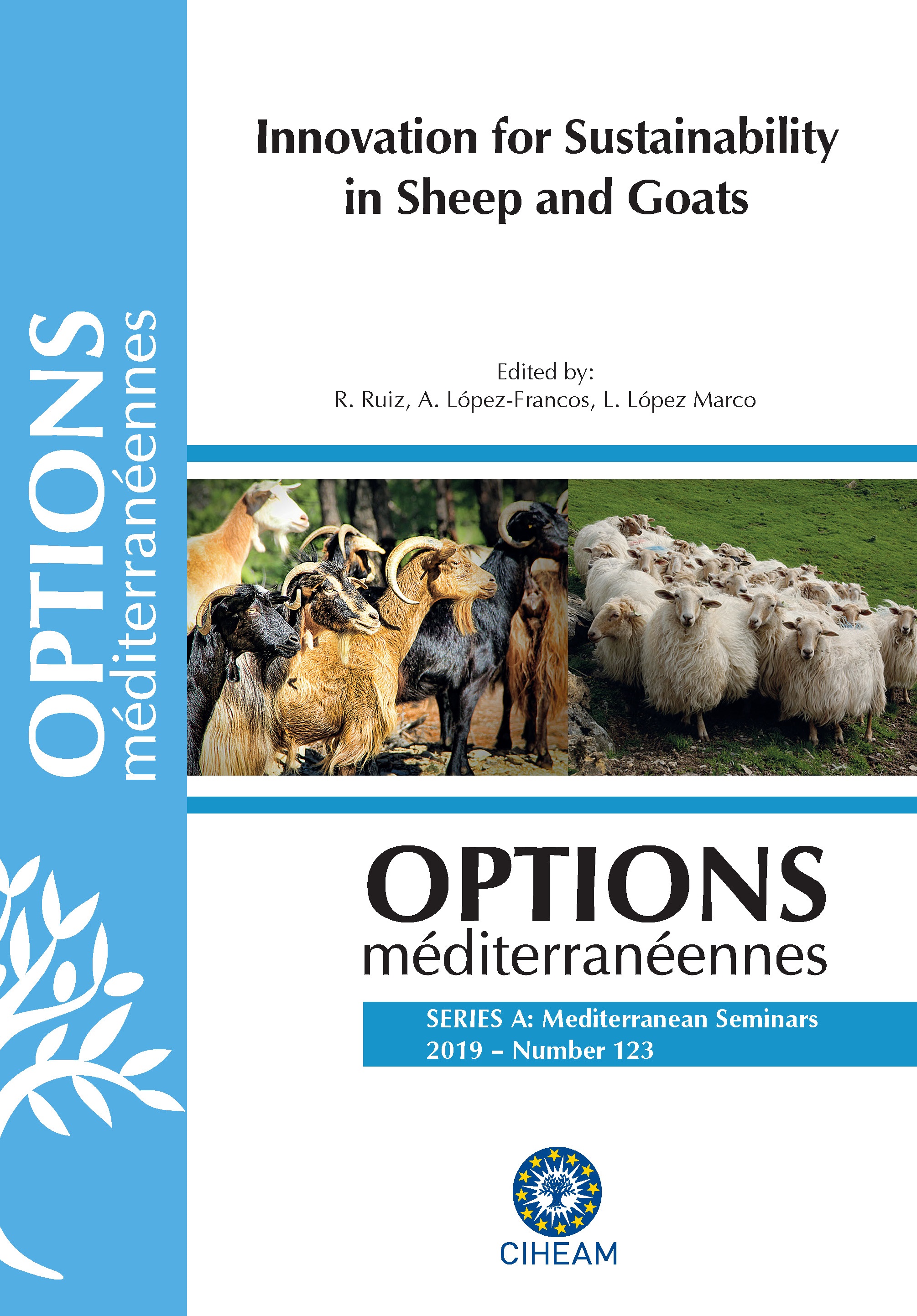| Article précédent | p. 139-142 | Article suivant |
Feeding behaviour, intake, apparent digestibility and plasma metabolites of Latxa dairy ewes as affected by cold-pressed oilseed cakes and sainfoin
The hypothesis tested was that the tanniferous forage sainfoin, given as hay, has an advantage over a typical fescue in dairy ewes with respect to intake, ruminal fermentation and ingestive behaviour when cold pressed oilseed cakes rich in crude fat are formulated in the concentrate. A lactation trial was carried out with 72 blackfaced Latxa dairy ewes at early lactation in a 2 x 3 factorial arrangement involving two forages (fescue and sainfoin hay) and 3 experimental concentrates. Concentrates were formulated to contain coldpressed rapeseed cake, cold-preseed sunflower cake or palm as fat sources and to provide equal amounts of crude protein fat and energy. No interactions between concentrate and forage were observed. None of the measured traits was affected by concentrate. However, feeding sainfoin increased forage eating time (356 vs. 279 min/d, P<0.001), reduced rumination time (325 vs. 422 min/d, P<0.001), increased forage dry matter intake (1.84 vs. 0.99 kg/d, P<0.001), apparent organic matter digestibility (613 vs. 580 g/kg, P = 0.011) and IGF-1 plasma concentration (110.7 vs. 98.6 ng/ml, P = 0.014). In conclusion, cold pressed oilseed cakes can be used as feedstuffs regardless of the forage used.
L’hypothèse testée était que le sainfoin, donné comme du foin, a un avantage sur une fétuque chez les brebis laitières par rapport à la ingestion, la fermentation ruminal et au comportement ingestif lorsque des tourteax d’oléagineux pressés à froid riche en graisse brute sont formulés dans le concentré. Un essai de lactation a été mené avec 72 brebis laitières au début de l’allaitement dans un arrangement factoriel 2 x 3 impliquant deux fourrages (fétuque et sainfoin) et 3 concentrés expérimentaux. Les concentrés ont été formulés pour contenir tourteau de colza, tournesol ou palme comme sources de graisse, et pour fournir des quantités égales de graisse, de protéines brutes et d’énergie. Aucune interaction entre le concentré et le fourrage n’a été observée. Aucun des caractères mesurés n’a été affecté par le concentré. Cependant, sainfoin a augmenté le temps d’ingestion (356 vs. 279 min/d, P<0.001), a réduit le temps de rumination (325 vs. 422 min/d, P<0.001), a augmenté l’ingestion de fourrage (1.84 vs. 0.99 kg/d, P<0.001), la digestibilité apparente (613 vs. 580 g/kg, P = 0.011), la concentration plasmatique d’IGF-1 (110.7 vs. 98.6 ng/ml, P = 0.014). En conclusion, les tourteaux d’oléagineux pressés à froid peuvent être utilisés comme aliments pour LES animaux quel que soit le fourrage utilisé.
- [ Afficher ]
- [ Télécharger ]
- [ Exporter la citation ]
Vous pouvez télécharger la citation au format :
- [ Imprimer ]
-
Mots-clés
BRASSICA NAPUS, TANNIN, TOURNESOLCiter cet article
García-Rodríguez A., Goiri I., Pineda-Quiroga C., Pascual A., Atxaerandio R., Ruiz R. Feeding behaviour, intake, apparent digestibility and plasma metabolites of Latxa dairy ewes as affected by cold-pressed oilseed cakes and sainfoin. In : Ruiz R. (ed.), López-Francos A. (ed.), López Marco L. (ed.). Innovation for sustainability in sheep and goats. Zaragoza : CIHEAM, 2019. p. 139-142. (Options Méditerranéennes : Série A. Séminaires Méditerranéens; n. 123). 2. Joint Seminar of the Subnetworks on Nutrition and on Production Systems of the FAO-CIHEAM Network for Research and Development in Sheep and Goats, 2017/10/03-05, Vitoria-Gasteiz (Spain). http://om.ciheam.org/om/pdf/a123/00007873.pdf



